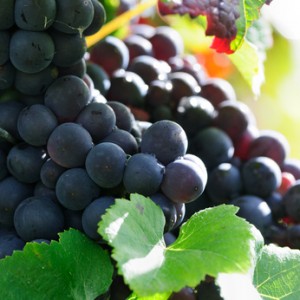 Whether you’re growing grapes for the fruit or their color and leaf texture, grape vines are a great addition to the garden. There are several varieties that produce delectable table grapes, and the large, lobed leaves provide a textural contrast when juxtaposed against plants with small leaves or the long, thin blades of ornamental grasses.
Whether you’re growing grapes for the fruit or their color and leaf texture, grape vines are a great addition to the garden. There are several varieties that produce delectable table grapes, and the large, lobed leaves provide a textural contrast when juxtaposed against plants with small leaves or the long, thin blades of ornamental grasses.
What Grapes Need to Grow
One of the most important factors in growing a successful garden is putting the right plant in the right place. It’s important to understand the growing conditions each plant needs to survive. Grapes are no different.
To grow grapes successfully, plant your grape vines in moderately fertile soil with good drainage and in full sun. The other important component to good grape production is heat – a location that gets western or southern sun exposure is best. In fact, in cooler climates or those with shorter growing seasons, it’s helpful to add a dark mulch, similar to those used to grow heat-loving vegetables such as eggplants, tomatoes, and peppers. A black mulch or dark river stones that reflect light and heat to the vines will help ripen the fruit.
Plant your vines in a spot that also gets plenty of air circulation. Without good air circulation, grapes can become more susceptible to fungal diseases such as downy mildew, powdery mildew and Anthracnose. If you have a sunny spot in your garden that gets a slight breeze throughout the day, you’ve found a good spot.
Finally, grapes need support. The vines can quickly cover a fence or trellis. Whatever support structure you choose, make sure it is strong enough to hold up to the twining, vigorous vines. If you’re seeking privacy, a grape vine can quickly cover a chain-link fence, but solid fence posts with trellis cables strung between them are all you need to support a grape vine.
Pruning is Essential to Growing Grapes
Pruning could be listed above as one of the things grapes need to grow, but it’s so essential to the production of fruit that it deserves to be called out specifically. Grapes need hard pruning every single year. The reason for this is simple. Grapes produce fruit on 1-year-old wood. If you don’t prune your grape vines, you will not get good fruit production.
When it comes to pruning grapes, there are a lot of good guides available. However, I would encourage you to be fearless. It’s pretty difficult when pruning grapes to cut too much, and grapes are vigorous enough that they typically grow back quickly after pruning. Don’t skimp on pruning.
Growing Grapes for Their Color
Most grapes have large, bright green, lobed leaves, but Vitus vinifera ‘Purpurea’ has large leaves that emerge green in the spring, change to bronze, and then turn purple. In the fall, the leaves change to a vibrant red. When planted next to other vines such as golden hops (Humulus lupulus ‘Aureus’), which has yellow to chartreuse-colored leaves, or kiwi (Actinidia kolomikta ‘Arctic Beauty’), which has green, pink, and white leaves, the color contrasts come alive. If you want to grow grapes for the color and texture of their leaves, Vitus vinifera ‘Purpurea’ is the way to go, but if you want to grow grapes for their fruit, this is not the grape you want. It will produce small clusters of grapes, but they are not nearly as tasty as those produced on wine and table grape varieties.
Growing Grapes for Their Fruit
Whether you’re growing grapes to eat or to produce wine, your grape vines will need at least 150 days to produce fruit. Successful grape production is all about heat units. Table grape and wine grapes typically need between 1400 and 2400 Growing Degree Days. If edible grapes are important to you, find a cooperative extension agency in your region, and find out which grape varieties grow best in your area. In cooler areas, you might be able to grow Pinot Noir, Muscat of Norway, or Zweigelt grape vines. In warmer areas, you might be able to grow Chardonnay or Malbec grapes. Again, it’s always best to check with your local cooperative extension agency for the best agricultural information specific to your region.
